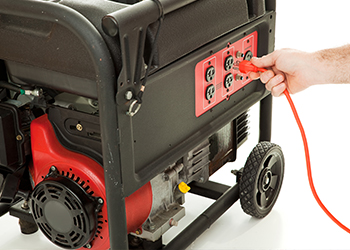 Portable Generators: How To Choose The Right Generator
Portable Generators: How To Choose The Right Generator
When you need electricity anywhere, nothing beats having a portable generator. They have countless uses, whether you need emergency power at home or want to plug in a power tool on the job site. However, you must know how they work and the overall generator safety information that comes with each type.
Keep reading further to learn the basics of portable generators and ensure you choose the right one for your needs.
How Does a Portable Generator Work?
They work by turning an onboard alternator with a gas-powered engine. As the alternator generates electricity, you can plug power cords into the outlets on the side of the generator. The most common fuel used is gasoline, but there are propane and diesel models as well.
If you need a cost-effective option, having a gas-powered generator will be the most inexpensive generator type. The design of portable generators is rather simple, with five main components that make up the construction. Five of the primary components that make up every portable generator are:
- Combustion Engine: The engine is the most important generator component, helping to produce mechanical energy.
- Alternator: While the engine operates, the alternator will convert the mechanical energy into electricity.
- Fuel Tank: The fuel tank will ensure that you receive a suitable amount of time to receive electricity. Fuel tank size can vary greatly depending on the size of the generator.
- Starter: A starter will start the portable generator’s engine. In most cases, it’s a pull-string, but it can be a push-button for more high-tech models.
- Outlets: The number of outlets that a portable generator has depends on its size and configuration. However, most generators have 1-4 power outlets.
Common Sizes
Portable generators come in all sizes and types, each having a different usage. For residential generators or light-duty applications, the most common sized generators are between 2.0kW and 2.4kW. If you need a medium-sized generator for applications like powering a compressor, the ideal portable generator would be between 3.0kW and 3.4kW.
When deciding on a portable generator, the types of generator will depend on the running wattage you require. Most households need 2,000 watts to operate basic household appliances, but this can be adjusted based on needs. Some households may want a 7,500-watt generator to power their home.
Safety Precautions
Safety should always be a priority when running one of these generators for your home or business. There are a few safety precautions that you should keep in mind to avoid any hazardous situations. The first precaution is ensuring the generator is in a well-ventilated area.
You should never run a portable generator indoors, as this could cause carbon monoxide poisoning. Another precaution is to avoid overloading a generator because it can damage it. While most modern types of generators have circuit breakers, it’s best to avoid overloading the system.
You should also consult a licensed electrician about installing a generator’s connection point on your home so you can safely use your generator. Improper use of a portable generator can be unsafe for the homeowner and the utility worker that are trying to repair the lines.
Conclusion
Whether you are a homeowner or work on a construction site, a portable generator will add convenience to your life. They come in all sizes and designs, with the types of generators depending on your needs. By choosing the correct generator and following the prescribed safety precautions, you can receive all the benefits.
